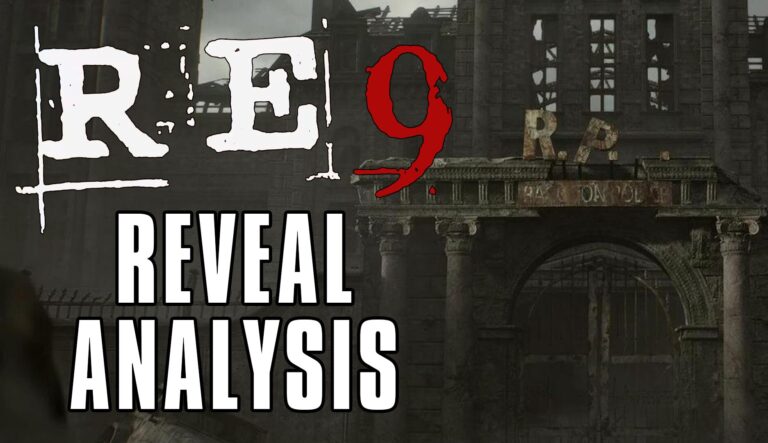 When the Fatal Frame series started back in 2001, it spawned a legion of fans that remains dedicated to this day, even after 7 years since the last release in the series. In 2014, Fatal Frame: Maiden of Black Water, the 5th main entry to the series was released on the Wii U console, and while many horror fans were dying to play the game, the US release was botched with a fairly lackluster dubbing/translation and a digital-only release, which alienated a decent segment of its biggest potential market.
When the Fatal Frame series started back in 2001, it spawned a legion of fans that remains dedicated to this day, even after 7 years since the last release in the series. In 2014, Fatal Frame: Maiden of Black Water, the 5th main entry to the series was released on the Wii U console, and while many horror fans were dying to play the game, the US release was botched with a fairly lackluster dubbing/translation and a digital-only release, which alienated a decent segment of its biggest potential market.
On top of this, Nintendo mostly abandoned the commercially unsuccessful Wii U not long after the release of the game, moving to focus on the Switch as their new main platform not long after Maiden launched, leaving even more fans struggling to find a reason to adopt the already-failing console.
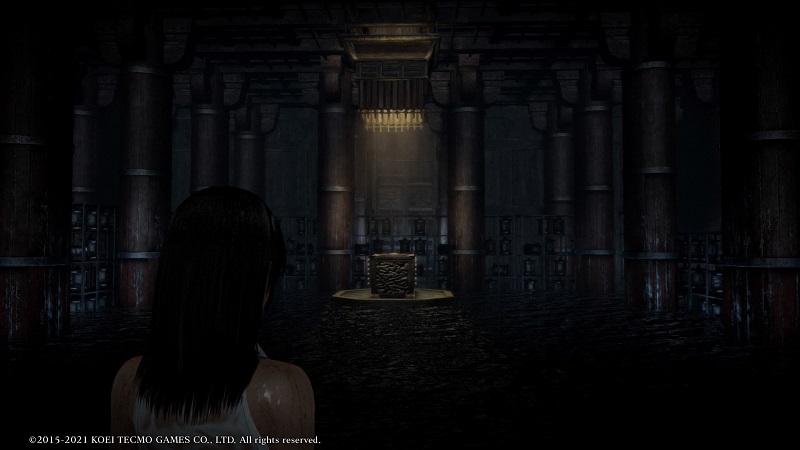 After most had accepted that the game would be stuck on the relatively failed Wii U console forevermore, Tecmo Koei announced earlier this year that the game would be finally receiving a remastered release on all modern consoles and PC, freeing the game from its previous publishing shackles.
After most had accepted that the game would be stuck on the relatively failed Wii U console forevermore, Tecmo Koei announced earlier this year that the game would be finally receiving a remastered release on all modern consoles and PC, freeing the game from its previous publishing shackles.
Now we can take a deeper look at this remastered release and see how the game holds up over 7 years after its original release and see how the Fatal Frame series may fit into the modern horror game landscape.
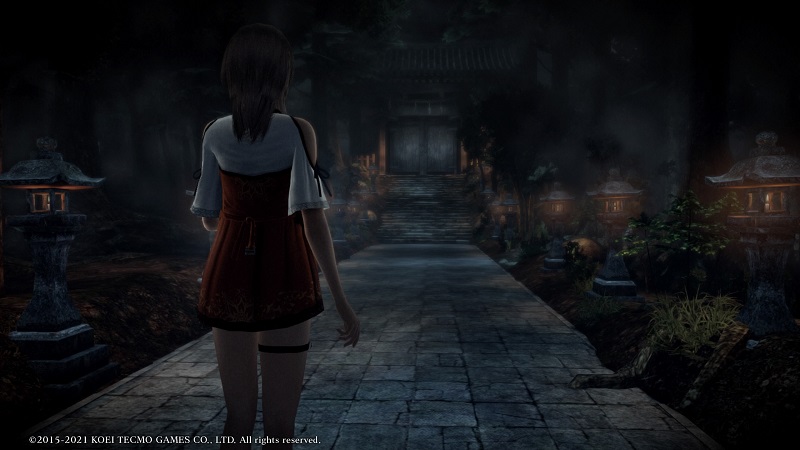 First of all, we can start out with the story of the game, and revisiting it several years after release can give a little bit of a new perspective since so many other Japanese horror games have been released since. Even after all this time, the story remains fairly compelling, even if it does repeat itself too many times and starts to drag a bit towards the end, it still manages to get you fairly invested in the characters.
First of all, we can start out with the story of the game, and revisiting it several years after release can give a little bit of a new perspective since so many other Japanese horror games have been released since. Even after all this time, the story remains fairly compelling, even if it does repeat itself too many times and starts to drag a bit towards the end, it still manages to get you fairly invested in the characters.
Like many other Japanese horror stories, while it is interesting enough, to an extent, it relies so heavily on tropes and traditions that it starts to feel like a broken record after a certain point. However, there are some slightly more unique updates to the typical main characters compared to some of the older Fatal Frame games, and this lies in one of the biggest themes of the story overall, which is that of depression and suicide.
This is also one of the biggest social issues facing real-life Japan for many years now, and Fatal Frame 5 manages to include these themes like suicide, depression, and isolation into the story so much that it starts to feel like a heavy cloud hanging over the story, but I say this in a good way. It manages to humanize the characters and make you sympathize with their suffering to some extent, and also simultaneously serves to make the whole environment of the world you inhabit within the game feel that much more ominous and sad, which can be used to good effect in a horror game.
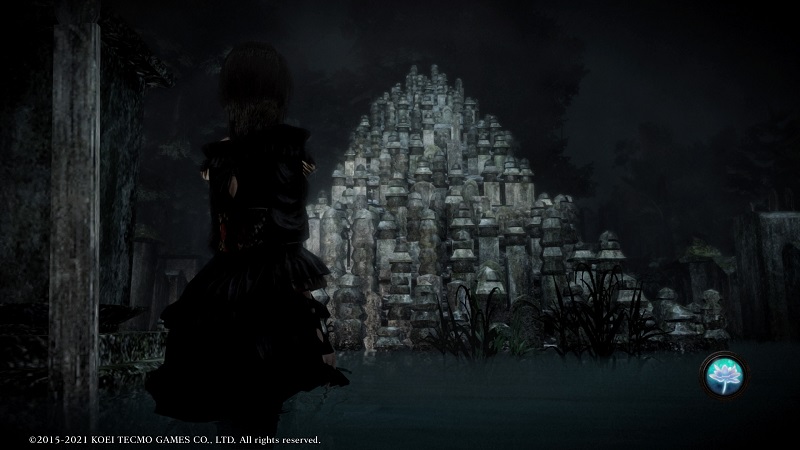 As I discussed in my recent interview with the creators of the series, they were inspired to include several of Japan’s most famous “haunted” areas and stories loosely into Fatal Frame 5, and the influence from these areas or stories is heavily felt in the final game, especially from places like Mount Osore (often called the “Gateway to Hell”) and Aokigahara (often called the “Suicide Forest”)
As I discussed in my recent interview with the creators of the series, they were inspired to include several of Japan’s most famous “haunted” areas and stories loosely into Fatal Frame 5, and the influence from these areas or stories is heavily felt in the final game, especially from places like Mount Osore (often called the “Gateway to Hell”) and Aokigahara (often called the “Suicide Forest”)
These elements serve as an interesting and powerful link to the real beliefs and superstitions that permeate Japanese culture, and they feel like a welcome addition to the world of Fatal Frame. While the subject matter can get very heavy at times (often more than the other games in the series,) it feels like it all contributes successfully to the overall narrative.
By the end of the game, even if it starts to feel fairly cyclical and entering trope-y anime story territory at a certain point and leaning extremely heavily on the loose and intangible realm of the supernatural, it still manages to stay engaging enough to finish, and wanting to see resolution for the characters is as good a reason as any. It also features many different endings depending on some choices you can make in the last stage of the game, and it ends up with very different fates for all of the main characters, which makes for a little extra replay value here.
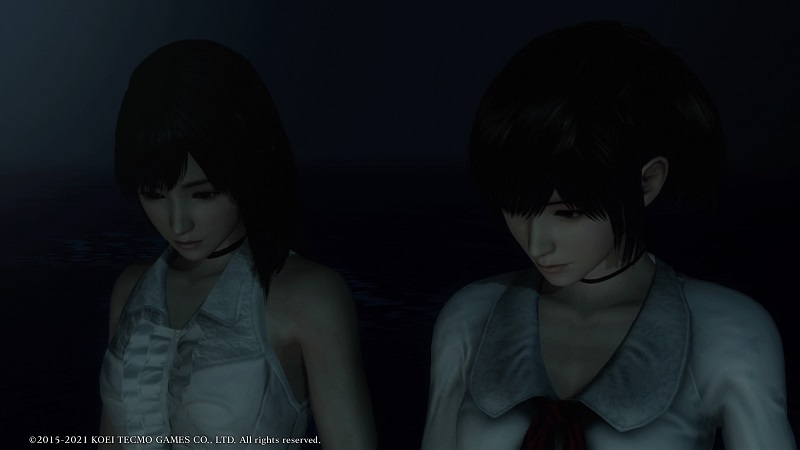 While I can definitely say it’s not the most compelling story I’ve experienced in a horror game lately, it still holds up pretty well and I appreciate its inclusion of modern elements of mental health into the otherwise typical Fatal Frame-type story about ancient curses and vengeful ghosts, and still make it feel fairly grounded, in a certain sense.
While I can definitely say it’s not the most compelling story I’ve experienced in a horror game lately, it still holds up pretty well and I appreciate its inclusion of modern elements of mental health into the otherwise typical Fatal Frame-type story about ancient curses and vengeful ghosts, and still make it feel fairly grounded, in a certain sense.
The story also brings back Miku, the main character from the first Fatal Frame game in an interesting way that’s very satisfying to see and it’s great to see her back again. I won’t go too much into detail here to avoid spoilers, but it’s a nice touch to bring the series back to its beginnings and continue the story of the character that started it all.
There are a few other nice ways that Fatal Frame 5 updates the formula as far as story goes, and one of them is by often lumping many different lore-related text items together during many scenes, eliminating much of the constant backtracking and searching for these items one by one, which tended to waste some time in the previous entries.
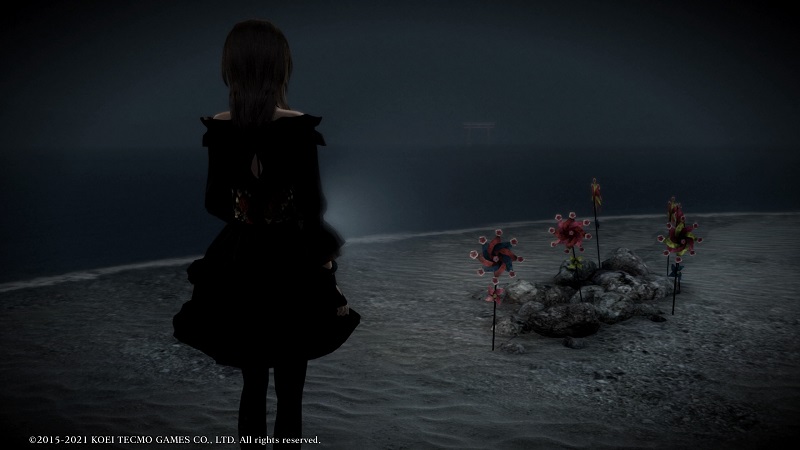 Aside from these convenient “lore-dumps” throughout the story, there’s the new “Fatal Glance” gameplay feature, which allows you a small window to get close and touch the ghosts who have been recently exorcized by your camera, and it plays an FMV scene showing the details of their death and what led them to be a ghost. This lends extra back story to every single type of ghost in the game (of which there are many,) and it’s a nice way to add extra detail to the story and see some nice extra scenes to further the immersion.
Aside from these convenient “lore-dumps” throughout the story, there’s the new “Fatal Glance” gameplay feature, which allows you a small window to get close and touch the ghosts who have been recently exorcized by your camera, and it plays an FMV scene showing the details of their death and what led them to be a ghost. This lends extra back story to every single type of ghost in the game (of which there are many,) and it’s a nice way to add extra detail to the story and see some nice extra scenes to further the immersion.
As far as pacing, the way the story starts to re-tread so much towards the end and keeps forcing you to re-trace the same routes through the same areas gets a little tiresome, but this is how Fatal Frame has always been. It’s never enough to completely lose interest, but it feels like they could have cut down the length of the game and story in several ways to be a tighter narrative and still accomplished exactly what it wanted to say.
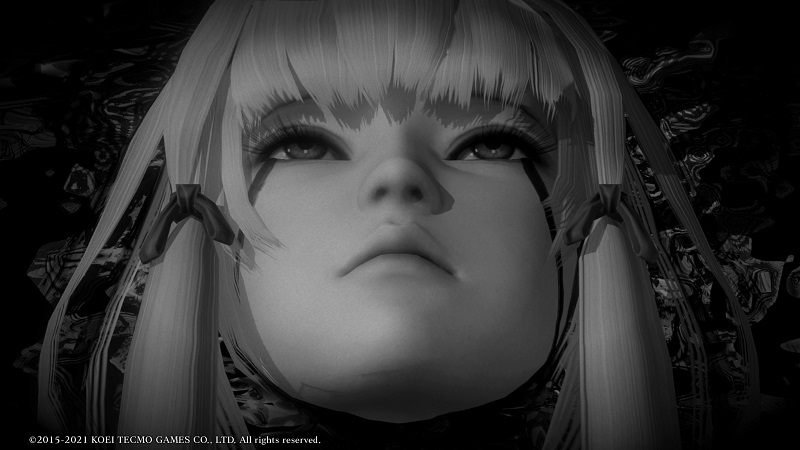 Moving on from the story, we can get into the gameplay of the experience, which is one of the more interesting aspects here, since it is a remaster of a game from a previous generation. First, there are quite a number of quality-of-life improvements here that are very welcome and almost necessary after having several years pass since its original release.
Moving on from the story, we can get into the gameplay of the experience, which is one of the more interesting aspects here, since it is a remaster of a game from a previous generation. First, there are quite a number of quality-of-life improvements here that are very welcome and almost necessary after having several years pass since its original release.
Some of the biggest improvements in this sphere are full language options, which allow you to turn off the lackluster English dubbing that was produced for the game, and use the original Japanese language, which makes a big difference in a game as inherently and wholly Japanese as Fatal Frame is. This was not an option in the original Wii U release of the game, and it’s a game-changer that is crucial in making this remastered package a success.
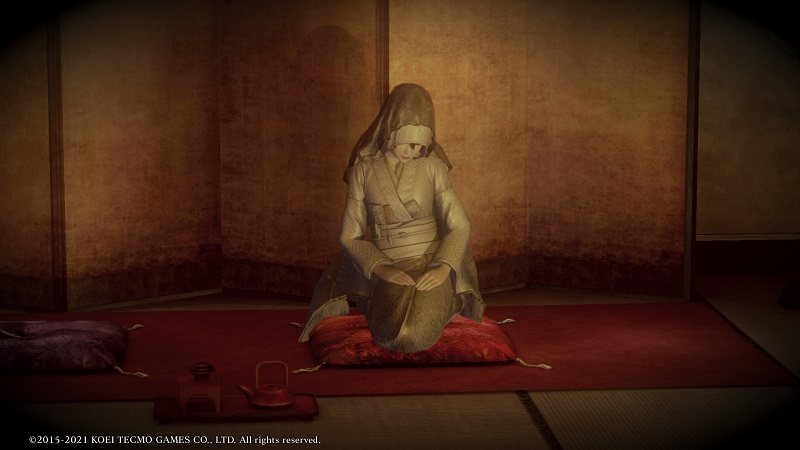 While there are some small improvements to the game’s performance overall, the camera during the 3rd-person exploration segments is still rather clunky and tends to get caught on things and swing around at times when it shouldn’t. This is somewhat understandable since the game is always trying to present the most cinematic camera angle it can at any given moment, but sometimes the confined spaces and overly-populated areas cause it to behave irregularly in ways that can get distracting and a little bit frustrating at times.
While there are some small improvements to the game’s performance overall, the camera during the 3rd-person exploration segments is still rather clunky and tends to get caught on things and swing around at times when it shouldn’t. This is somewhat understandable since the game is always trying to present the most cinematic camera angle it can at any given moment, but sometimes the confined spaces and overly-populated areas cause it to behave irregularly in ways that can get distracting and a little bit frustrating at times.
As for the general gameplay improvements that Fatal Frame 5 brought to the series over its previous entries, it’s still worth mentioning just how much better the game functions than all of its predecessors.
The new map and the feature that lets you “trace” the character you’re looking for are especially nice additions to FF5, with the map having more detail and usability than ever before, and the new trace feature essentially giving you a hint of where you should be going next. This trace feature streamlines the gameplay by leaps and bounds compared to all over Fatal Frame games, and makes for a much smoother experience than ever before.
Even with the trace feature being around for a good majority of the game, there are still some segments where this feature is not available, and you must find your objectives in an old-school way. This leads to a few segments that feel much more obtuse and unclear than others, and can easily lead to getting stuck a few times, but it only happened a small handful of times throughout.
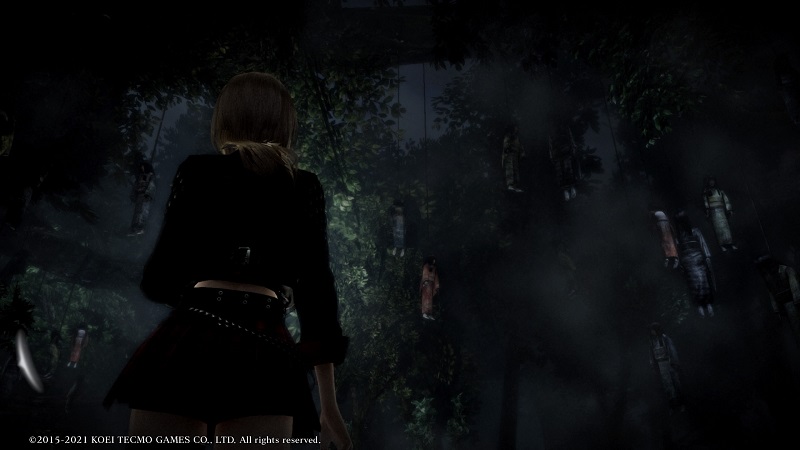 Some of the objectives that involve taking a very specific picture of something in order to progress can get extremely precise and frustrating at times, especially given the new versatility of the camera function compared to previous games. These just stick around as a reminder of some clunkiness that feels leftover from previous entries, but thankfully they’re few and far between.
Some of the objectives that involve taking a very specific picture of something in order to progress can get extremely precise and frustrating at times, especially given the new versatility of the camera function compared to previous games. These just stick around as a reminder of some clunkiness that feels leftover from previous entries, but thankfully they’re few and far between.
Some other nice features that just add to the immersion and terror are things like the improved item pickup and door opening systems featured in FF5. With the updated item pickup system, whenever you go to pick up items, the animation requires you to hold the button down for an extended period of time to pick it up, and this also opens you up to random attacks by a ghost’s hand grabbing yours and not only scaring your pants off but also forcing you to lose some HP in a struggle if you don’t pull your hand away quickly enough.
This feature, along with the updated terrifying camera angles and animations for opening doors in FF5 make for some of the most tension-filled gameplay in any horror game to date. Never knowing when you’ll be grabbed when simply trying to pick up items or what might be behind a door as you’re opening it are features that are masterfully executed here in ways that cause constant unease in the player and must be experienced to grasp their true power.
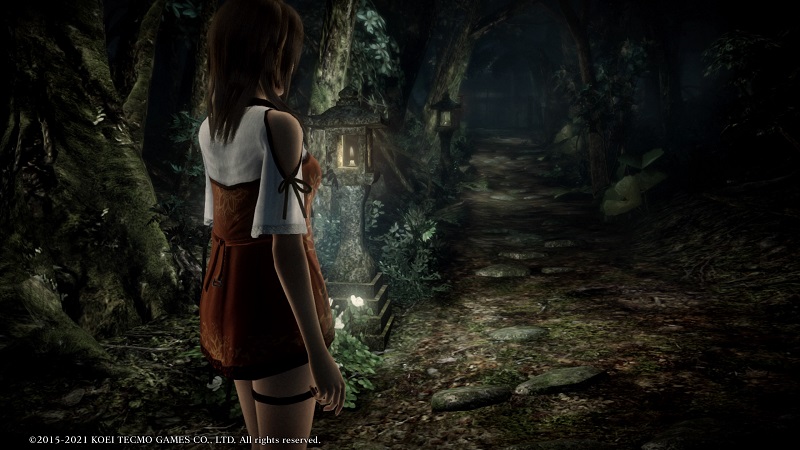
As for the visual and audio presentation, these are also absolutely at the top of their class and executed nearly flawlessly. The art design itself is breathtakingly gorgeous, from the beautiful and haunting traditional Japanese landscapes, forests, and buildings to the wonderfully detailed character, enemy, and costume designs that fill the world. Thanks to this newly remastered version, these elements all look better than ever and run at better framerates than previously possible, and it’s quite a sight to see.
Even if the visuals do show a little bit of their age, due to a relative lack of polygons and a few low-res textures here and there from being a 7-year-old game, the overall visual presentation still holds up very well.
For the audio design, Fatal Frame 5 features some of the most oppressive and horrifying sound design of any modern game, with constant mixes of audio feedback, strong wind sounds, loud stingers, sounds of static, harrowing screams and moans of tormented ghosts, and a whole host of other perfectly placed and recorded effects.
There is very little music in a traditional sense, as most of the soundtrack is made up of the previously mentioned sounds and effects, which works great in the game’s favor, as it generally always has with the FF series. The sound design brings the horror of Fatal Frame to a new level that’s more carefully crafted and intense than ever before and makes the game feel a cut above the rest.
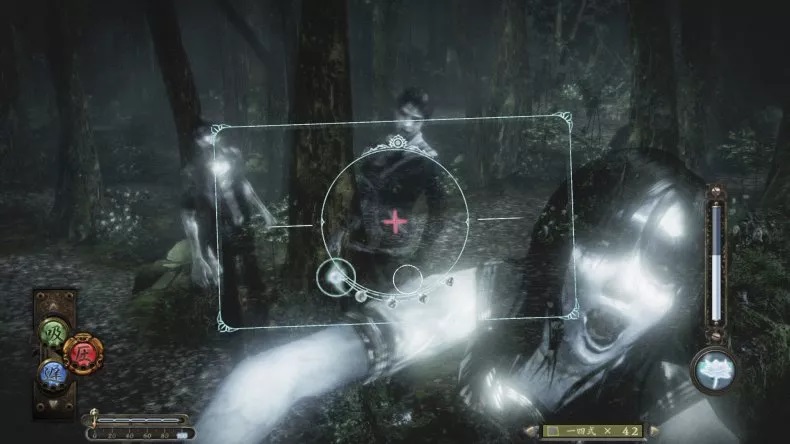
As for the controls, it’s an interesting but mixed bag for this remastered version, since the original Wii U version had such a very unique and specific control system, which used the screen on the Wii U’s gamepad to its advantage and made the gamepad into a real-time camera obscura. We got to try out the PlayStation 4/5 and Switch versions for this review, and there are some differences between the newer consoles and the Switch in several ways.
The remastered version for PlayStation/Xbox/PC has updated the controls for modern controllers, and it ends up functioning quite well, even if slightly less wieldy than its original version, due to the tilting of the camera capture area being tied to a button instead of using the motion controls of the Wii U gamepad. Playing with this standard control style makes it feel closer to Fatal Frame 1-3‘s controls, which may be preferable to some players who enjoy the classic FF games. While the PlayStation versions also do allow you to use the motion-sensing controls for the camera operation, it’s not quite as comfortable when you don’t have a screen on the controller to display what you’re seeing.
However, the Nintendo Switch version has interestingly stuck closer to the Wii U control scheme, allowing you to tilt the whole console itself for aiming the camera when playing in handheld mode to get closer to the feel of the original control scheme, which is a nice touch. Playing in docked mode or with a pro controller will obviously require you to use the same controls as the other new versions, but it’s nice that the handheld motion control method was retained for this version, even if the performance and visuals aren’t quite as optimized on Switch as the other versions.
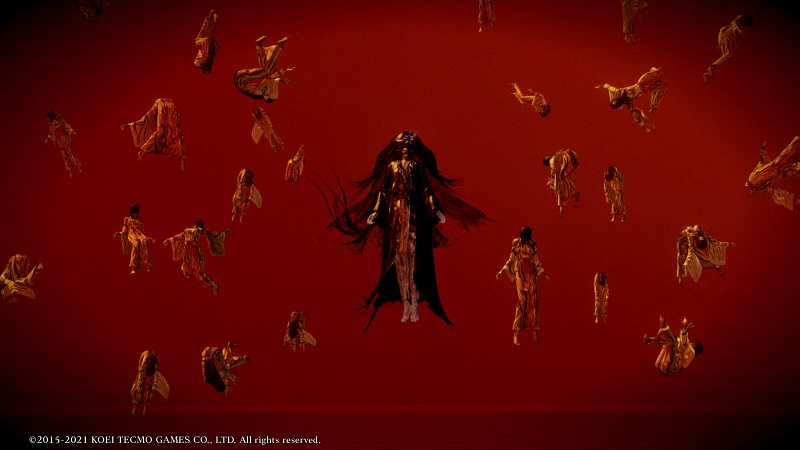
As far as content, Maiden clocks in at one of the longest average lengths in the series at around 12-15 hours for a playthrough, depending on how much note-reading and exploring off the beaten path you do. This is pretty long for most horror games in general, and while it does cut a few corners by having you repeat the same routes and areas several times with different characters, it manages to keep them just different enough to keep the motivation going.
While it does become a bit of a slog towards the end and the pacing could’ve used a little tightening up overall, it’s still a satisfactory length for those who want to be invested in the world.
As far as other types of content, there are several different endings, unlockable costumes, unlockable items, and several bonus chapters you unlock after completing different objectives, which is also satisfying since this type of feature is becoming less common in the horror gaming industry lately. It’s a little annoying that several costumes from the Wii U version were completely removed for this remaster, even though they also added a few new ones that weren’t in the original version, it’s just off-putting to have the content removed for a remaster.
The bonus chapters are just a few very short missions where you play as Ayane from Tecmo’s famous Dead or Alive series, and they provide a fun little alternative to the main story that ties together the Fatal Frame and DOA franchises in a fun way and changes up the gameplay a little bit as well. They ultimately only amount to about an extra 1-2 hours of gameplay, but it’s enjoyable to play through.
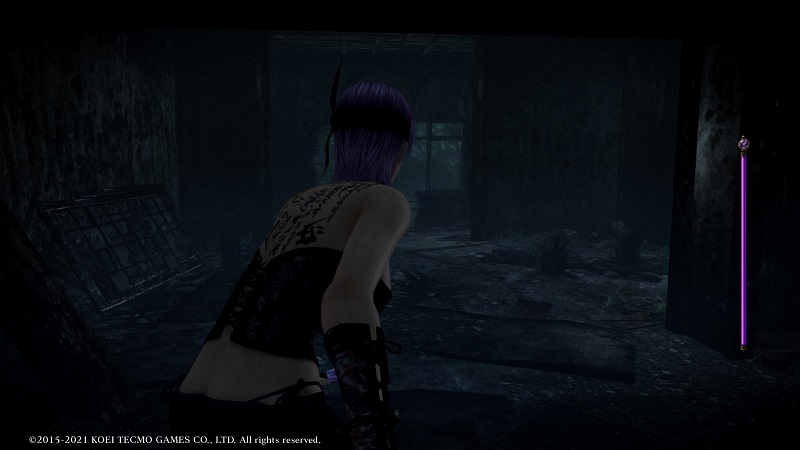 The $40 price tag feels more than worth the cost, for the value included in this package and the simple fact that the game is now playable on any modern platform of choice, and this should be a no-brainer purchase for fans of the series. For most horror fans in general, there will still be something to enjoy from the experience here, given the high production values and great gameplay featured here, even if the aesthetics and series lore aren’t particularly your style.
The $40 price tag feels more than worth the cost, for the value included in this package and the simple fact that the game is now playable on any modern platform of choice, and this should be a no-brainer purchase for fans of the series. For most horror fans in general, there will still be something to enjoy from the experience here, given the high production values and great gameplay featured here, even if the aesthetics and series lore aren’t particularly your style.
In summation, Fatal Frame: Maiden of Black Water is a solid remaster and facelift to an exceptional horror game that most fans of the genre should experience, regardless of the platform you choose. You can check it out on all platforms starting tomorrow, and hopefully, we’ll have some more news about where the franchise may be headed next in the near future.
 (9 / 10)
(9 / 10)
Amazing
 (9 / 10)
(9 / 10)
 IDOLxISxDEAD
IDOLxISxDEAD
